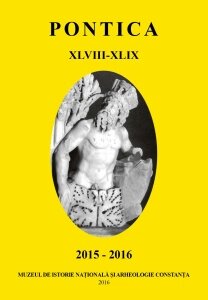Copia și absența sa. O discuție despre creativitate culturală pornind de la „Discobolul” lui Myron, sec. V a.Chr.
The Copy and its Absence. A Discussion on Cultural Creativity Based on Myron’s „Discobolus”, 5th Century BC.
Author(s): Ilinca DamianSubject(s): History, Anthropology, Social Sciences, Archaeology, Fine Arts / Performing Arts, Visual Arts, Ancient World, History of Art
Published by: Muzeul de Istorie Națională și Arheologie Constanța
Keywords: Greek sculpture; Classical period; copying; Roman sculpture; Roman province; Dobrudja; Discobolus; Myron;
Summary/Abstract: The question addressed by this paper concerns the copying techniques’ limits in sculpture. Considering that the Greek statue of Discobolus (Myron, fifth century BC) is a composition that bears the possibility for copying, proved by its great number of Roman copies that survived until today, the problem becomes the limits of this copy‐ making in an area that has similar development. I dare to consider that the real limits are not material, but cultural. If we analyse the situation of the roman province Dobroudja, contemporary with the Discobolus copies made by the romans, we can see that the theme, although famous in the centre of the Empire, is invisible for the borderlands. This paper is structured in two main parts, the first one concerning the process and technology necessary for creating and copying such a composition. The second part analyses the absence of the motif in the borderland area of Dobroudja and raises the possibility of cultural selection as being superior to the economic and technological development. The paper should be taken as an experiment concerning the problem of borderlands and cultural inventiveness.
Journal: Pontica
- Issue Year: 2015
- Issue No: 48-49
- Page Range: 461-474
- Page Count: 14
- Language: Romanian

